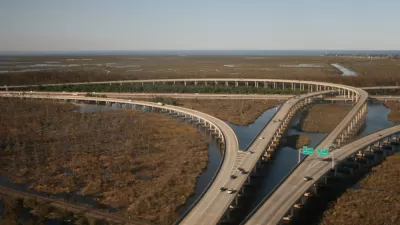Climate mitigation and adaptation have become de rigeur aspects of urban planning for most cities, according to results from MIT's international Urban Climate Change Governance Survey. What's missing in most plans is the link to economic development.

First, the good news from the Urban Climate Change Governance Survey (UCGS), conducted at MIT in collaboration with ICLEI, based on responses from 350 cities worldwide: "According to the findings, 75 percent of cities worldwide now tackle climate-change issues as a mainstream part of their planning, and 73 percent of cities are attempting both climate mitigation and climate adaptation," writes Peter Dizikes of the MIT News Office.
“Climate change isn’t an isolated issue,” says Alexander Aylettt, a postdoc in MIT’s Department of Urban Studies and Planning (DUSP), and the lead author of today’s report [PDF] (released May 29.) “It has large implications for all other aspects of urban life. What we are seeing is cities starting to build it into the DNA of how they approach urban planning.”
"But only 21 percent of cities report tangible connections between the response to climate change and achieving other local development goals," according to Aylett.
One exception is Portland, Ore., which "developed incentives, training, and regulations to help sustainable construction firms grow, while a pilot program called Clean Energy Works Portland employed 400 workers to reduce home energy use, reducing carbon emissions by 1,400 metric tons annually," observed Aylett. Another one was in Alberta, Canada.
Urban planners in Alberta, as Aylett notes, have studied the cost savings associated with limiting metropolitan sprawl and concluded that denser development could save $11 billion in capital costs over the next 60 years, and $130 million in annual maintenance. But most cities, he suggests, have simply not yet identified ways to link climate planning and economic development in the first place.
In terms of encompassing urban planning including climate mitigation and adaptation, also termed urban climate planning, the U.S. is lagging, according to survey results.
Compared with the global average of 75 percent, U.S. cities lag in planning for both mitigation and adaptation, with just 58 percent of cities addressing both.
What's interesting is that disconnect between mitigation/adaptation and incorporating climate change planning into local economic development issues may not be readily apparent in some media reports on the MIT News Office story. "Climate Change is Now Part of Global Urban Planning" is the title of the Science World Report article, for example. You just have to read deeper to find it.
FULL STORY: Global survey: Climate change now a mainstream part of city planning

Planetizen Federal Action Tracker
A weekly monitor of how Trump’s orders and actions are impacting planners and planning in America.

Map: Where Senate Republicans Want to Sell Your Public Lands
For public land advocates, the Senate Republicans’ proposal to sell millions of acres of public land in the West is “the biggest fight of their careers.”

Restaurant Patios Were a Pandemic Win — Why Were They so Hard to Keep?
Social distancing requirements and changes in travel patterns prompted cities to pilot new uses for street and sidewalk space. Then it got complicated.

Platform Pilsner: Vancouver Transit Agency Releases... a Beer?
TransLink will receive a portion of every sale of the four-pack.

Toronto Weighs Cheaper Transit, Parking Hikes for Major Events
Special event rates would take effect during large festivals, sports games and concerts to ‘discourage driving, manage congestion and free up space for transit.”

Berlin to Consider Car-Free Zone Larger Than Manhattan
The area bound by the 22-mile Ringbahn would still allow 12 uses of a private automobile per year per person, and several other exemptions.
Urban Design for Planners 1: Software Tools
This six-course series explores essential urban design concepts using open source software and equips planners with the tools they need to participate fully in the urban design process.
Planning for Universal Design
Learn the tools for implementing Universal Design in planning regulations.
Heyer Gruel & Associates PA
JM Goldson LLC
Custer County Colorado
City of Camden Redevelopment Agency
City of Astoria
Transportation Research & Education Center (TREC) at Portland State University
Camden Redevelopment Agency
City of Claremont
Municipality of Princeton (NJ)





























